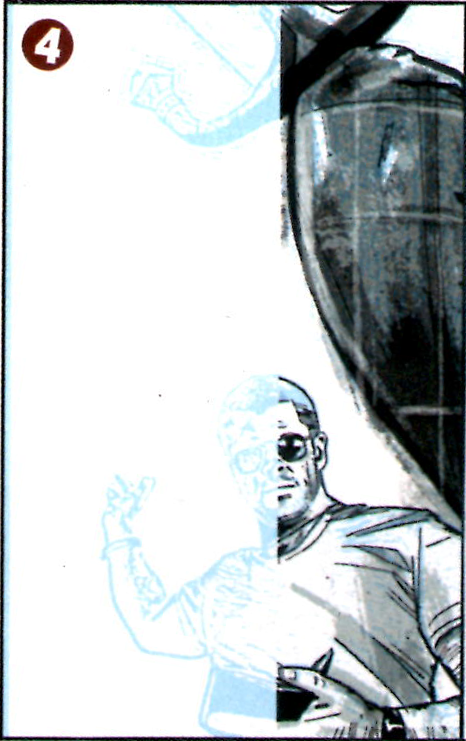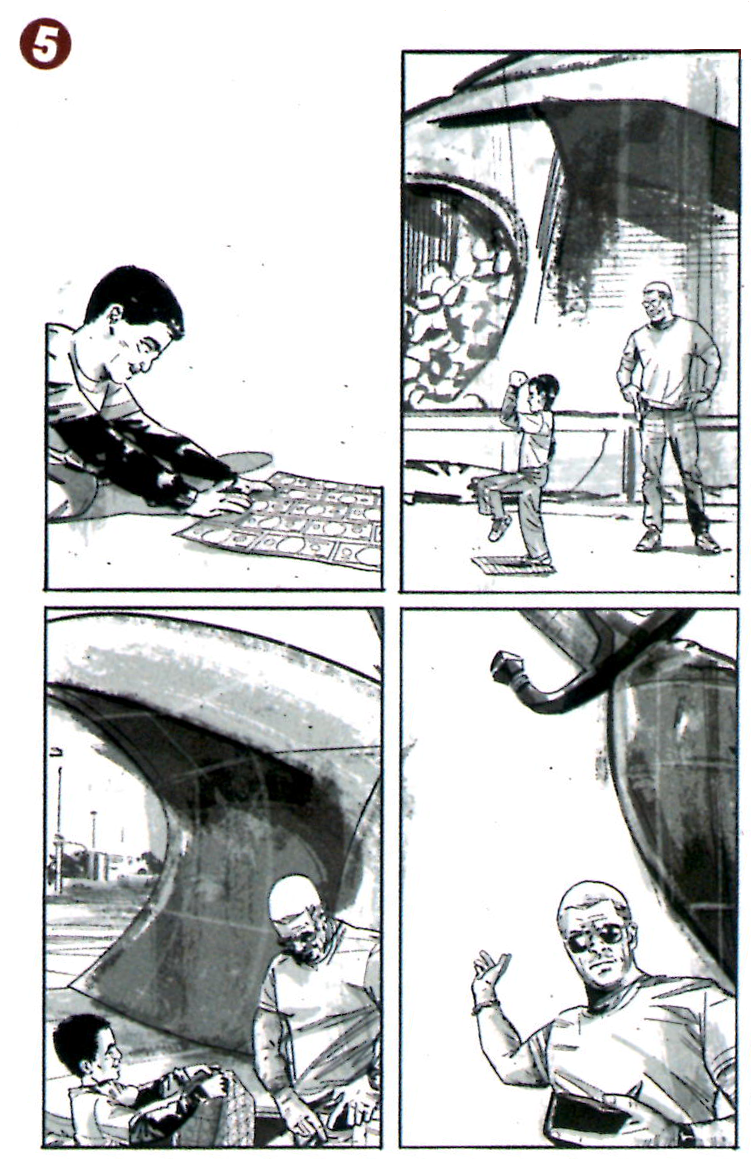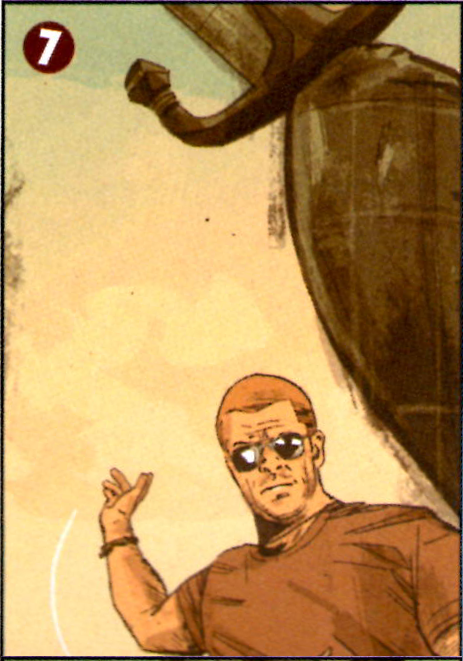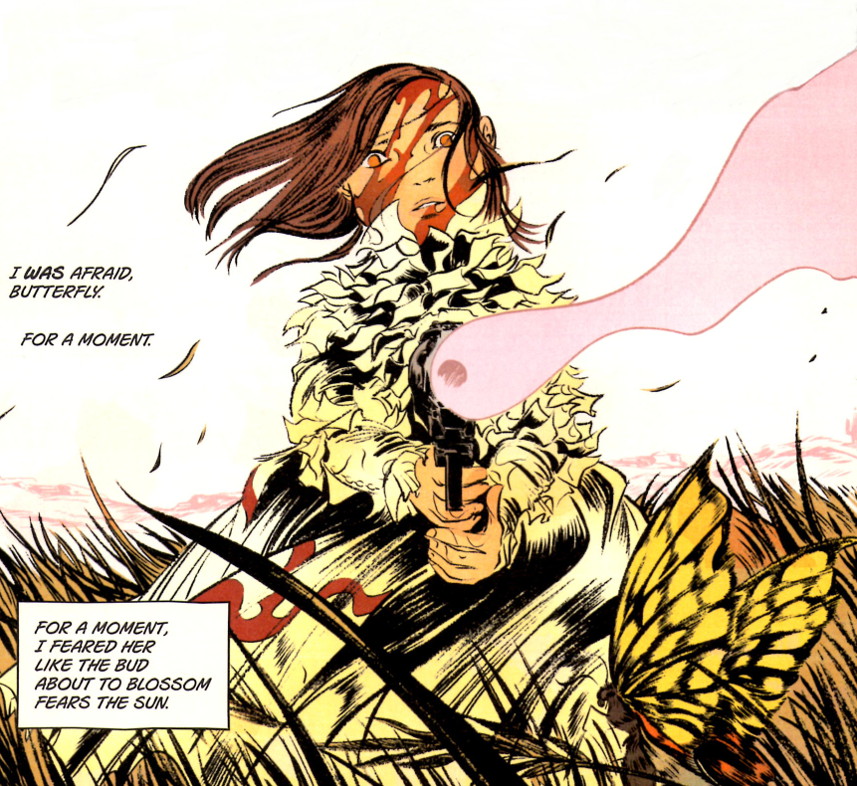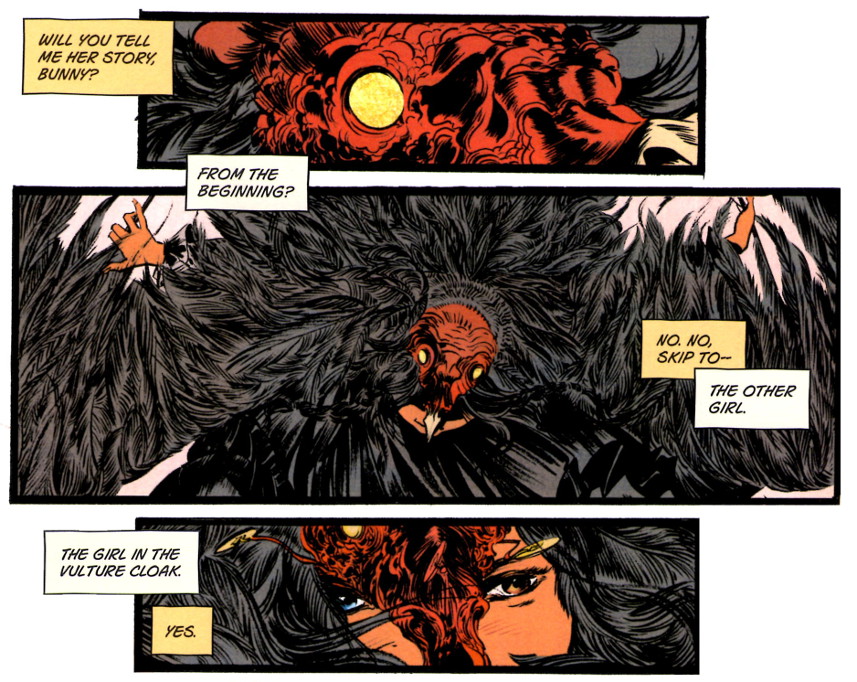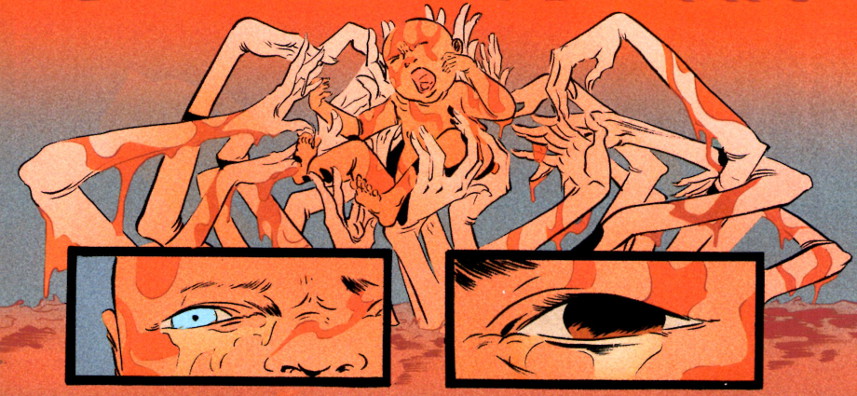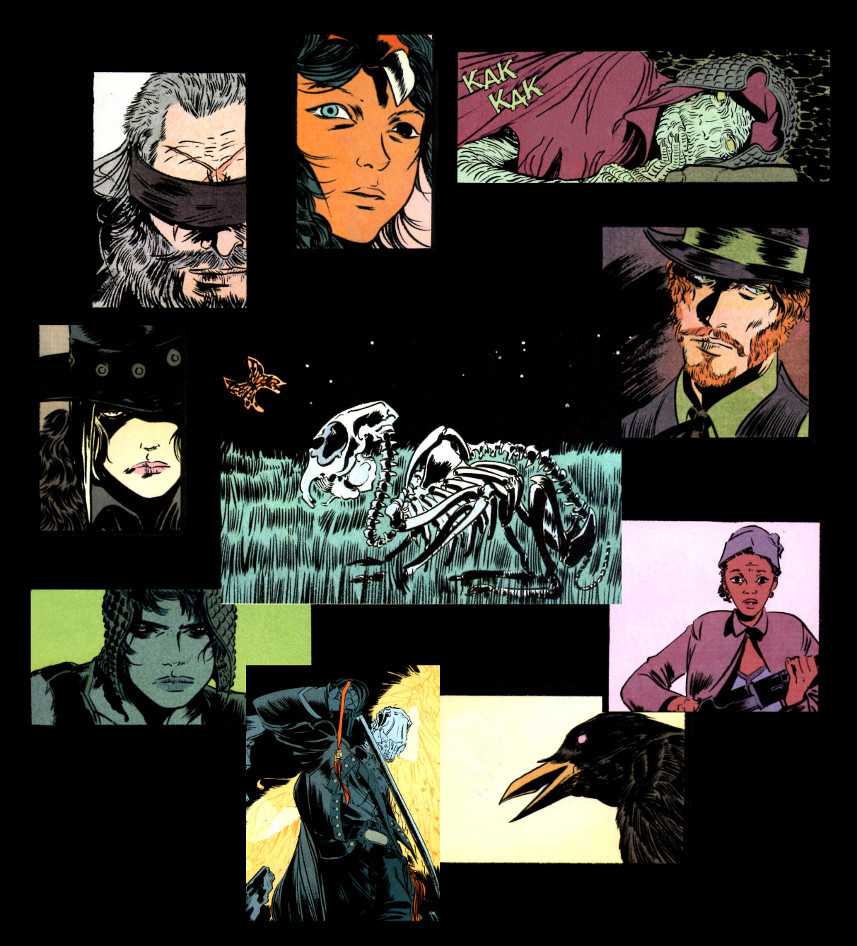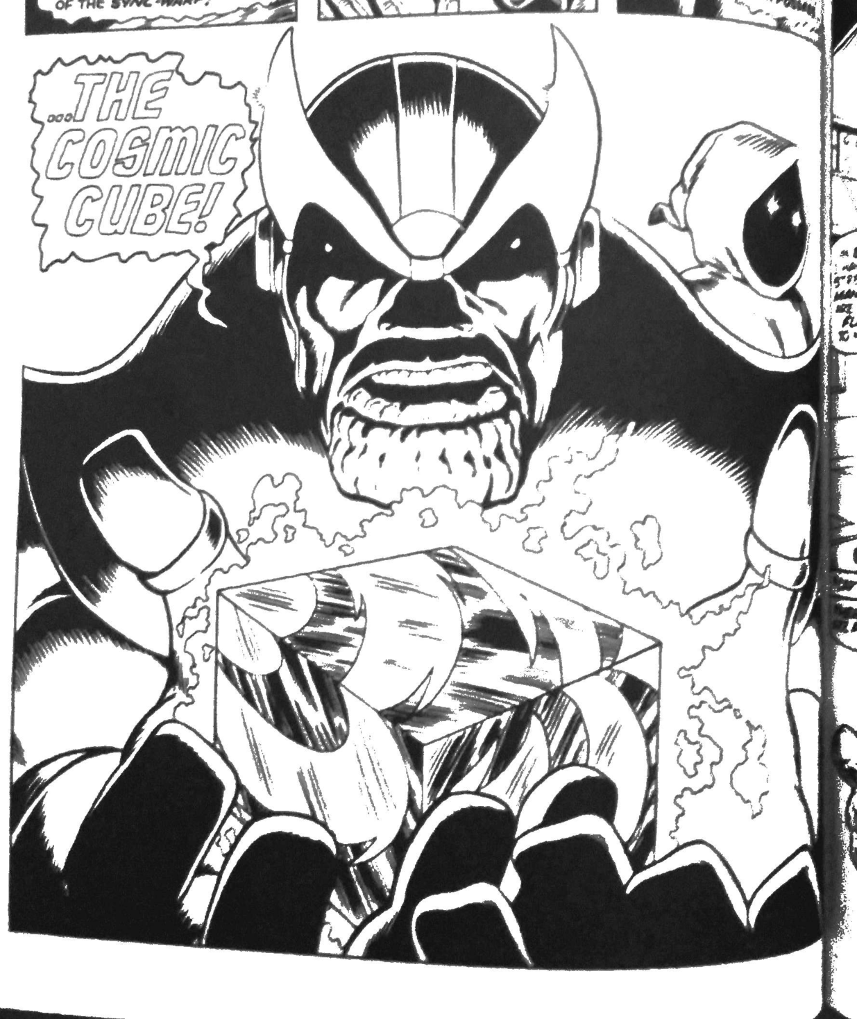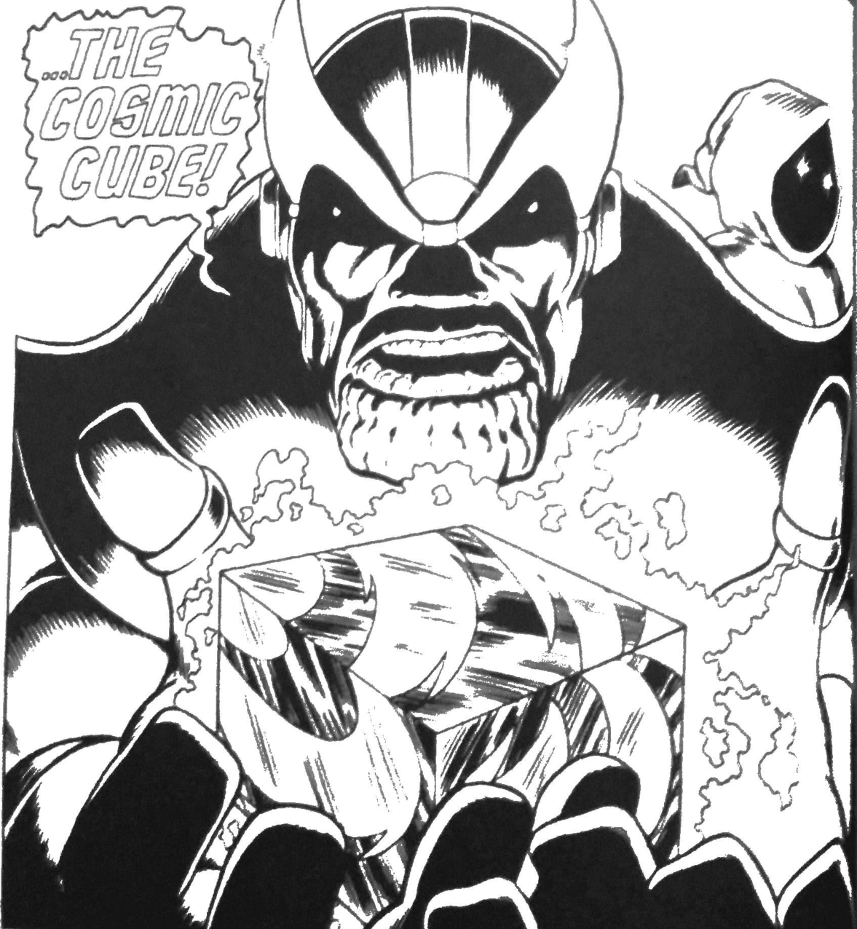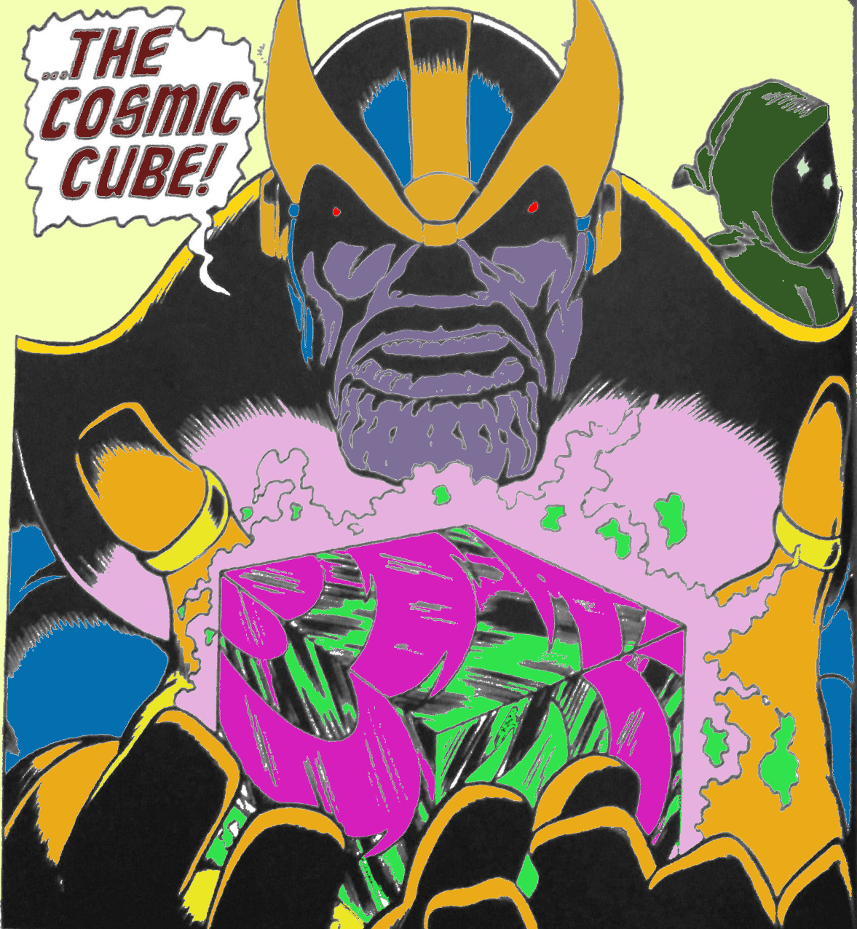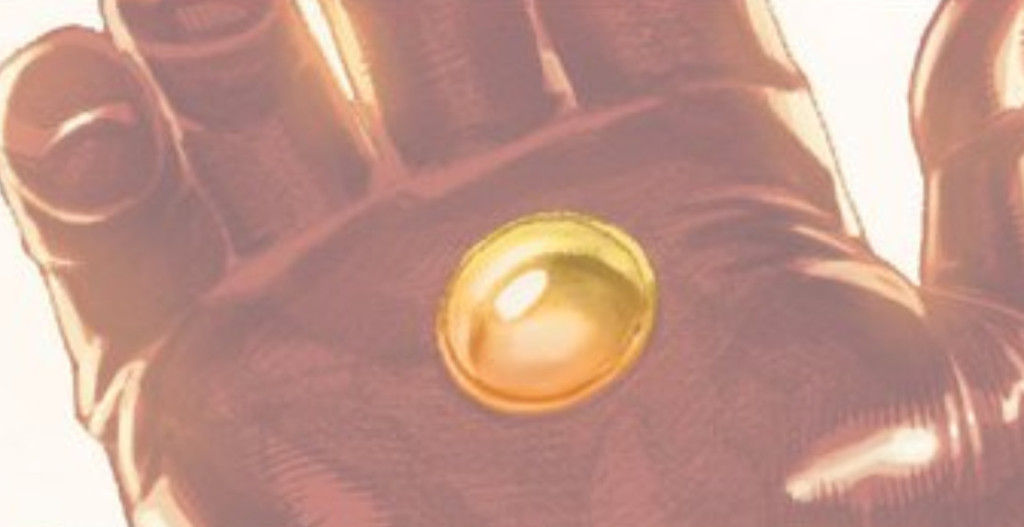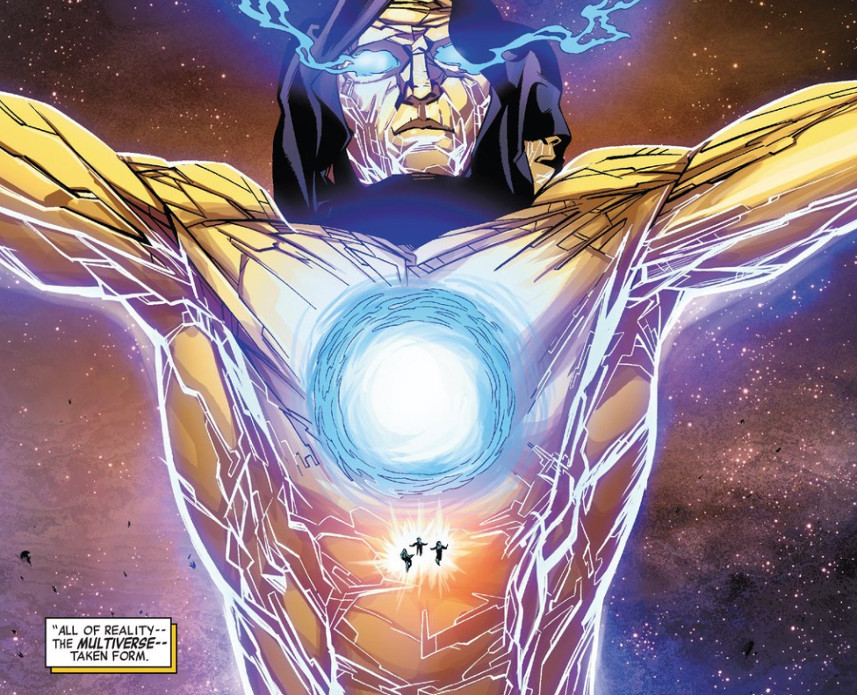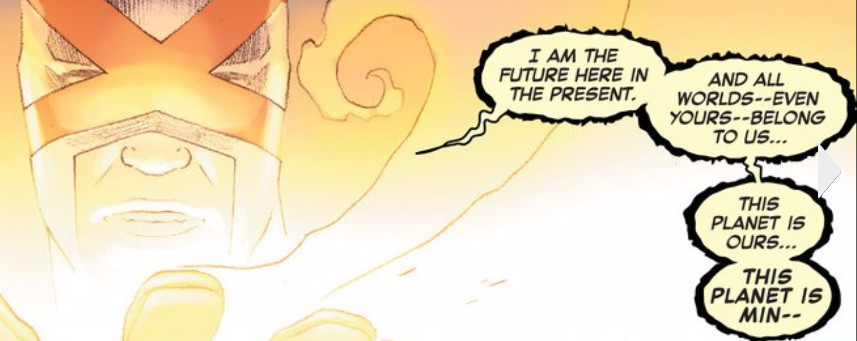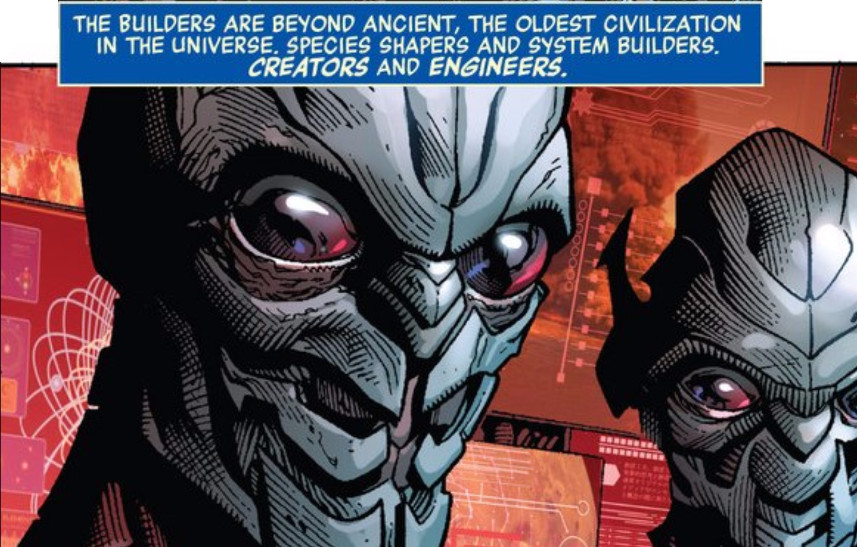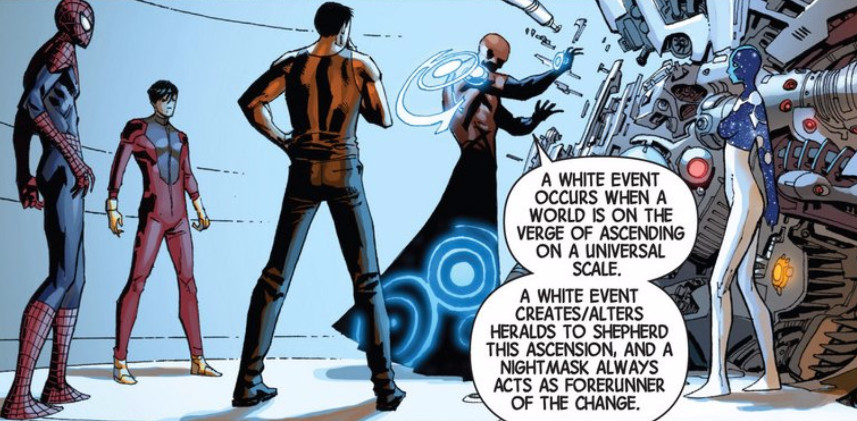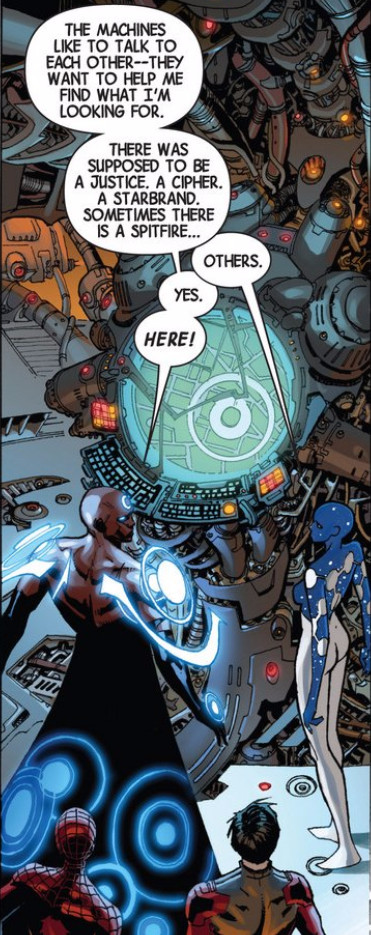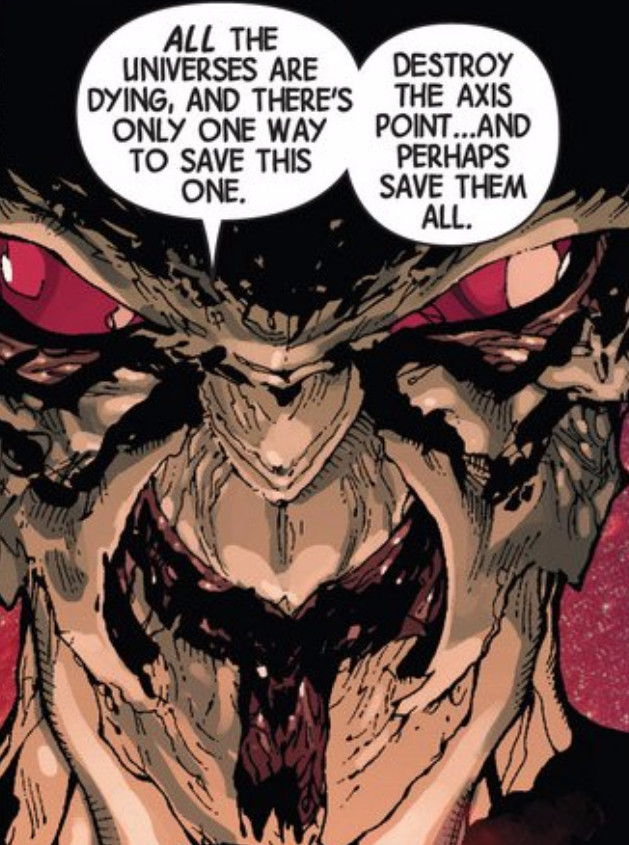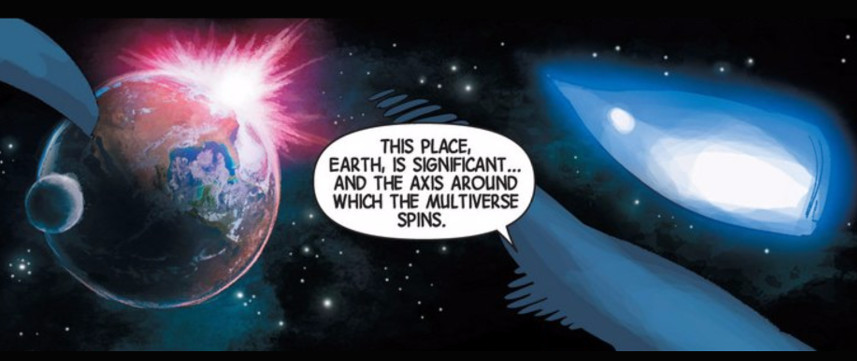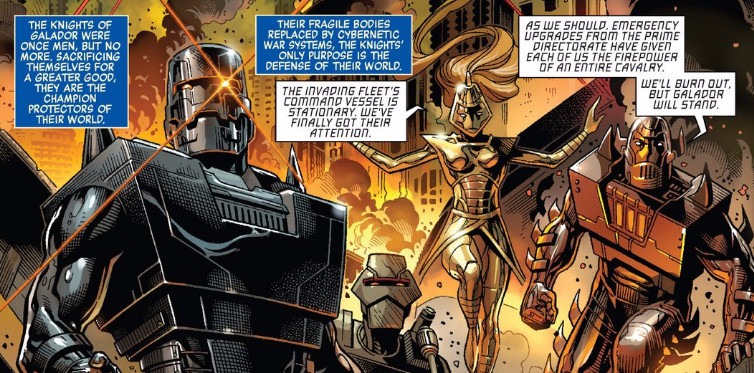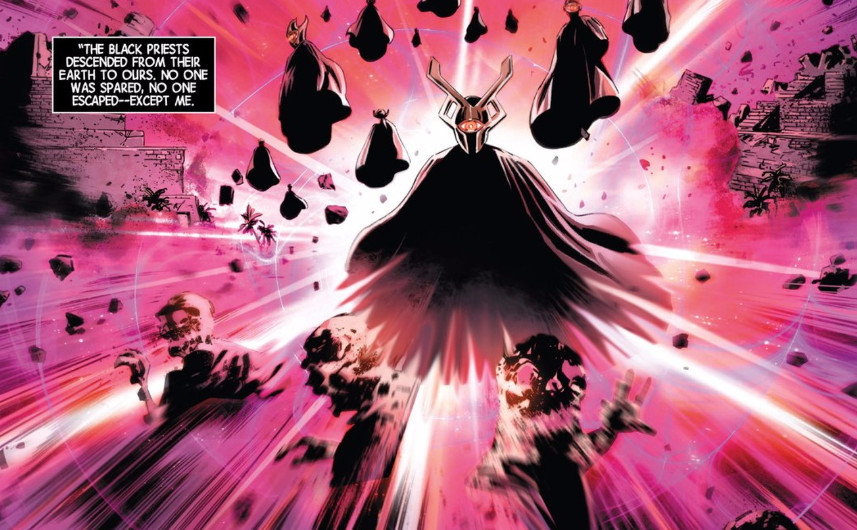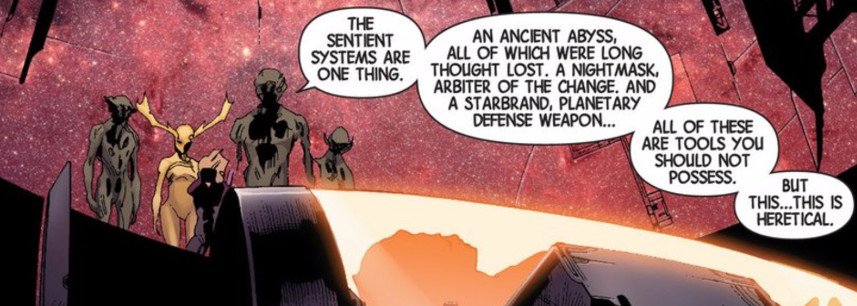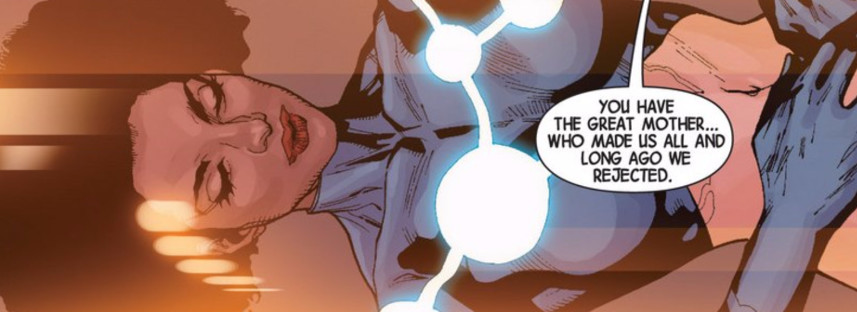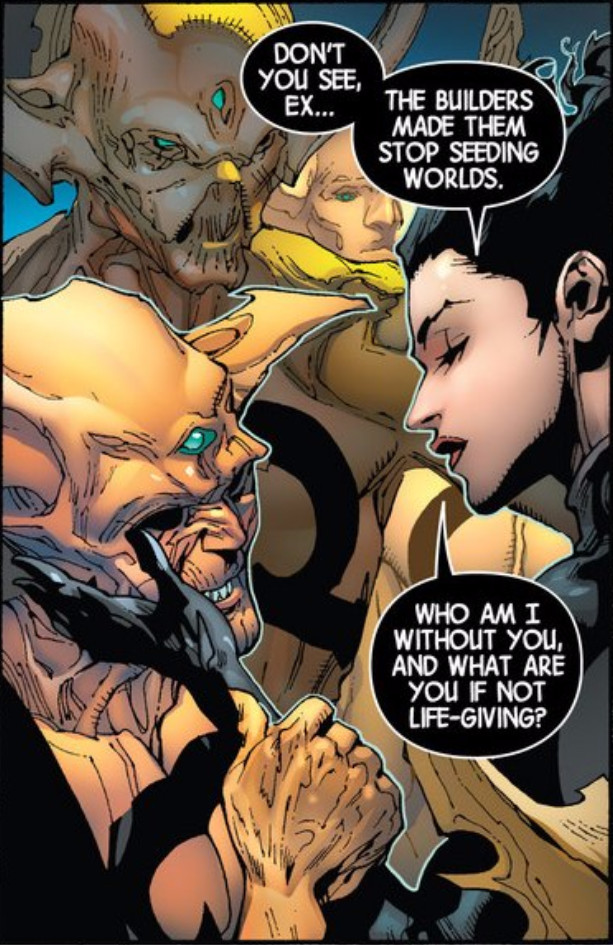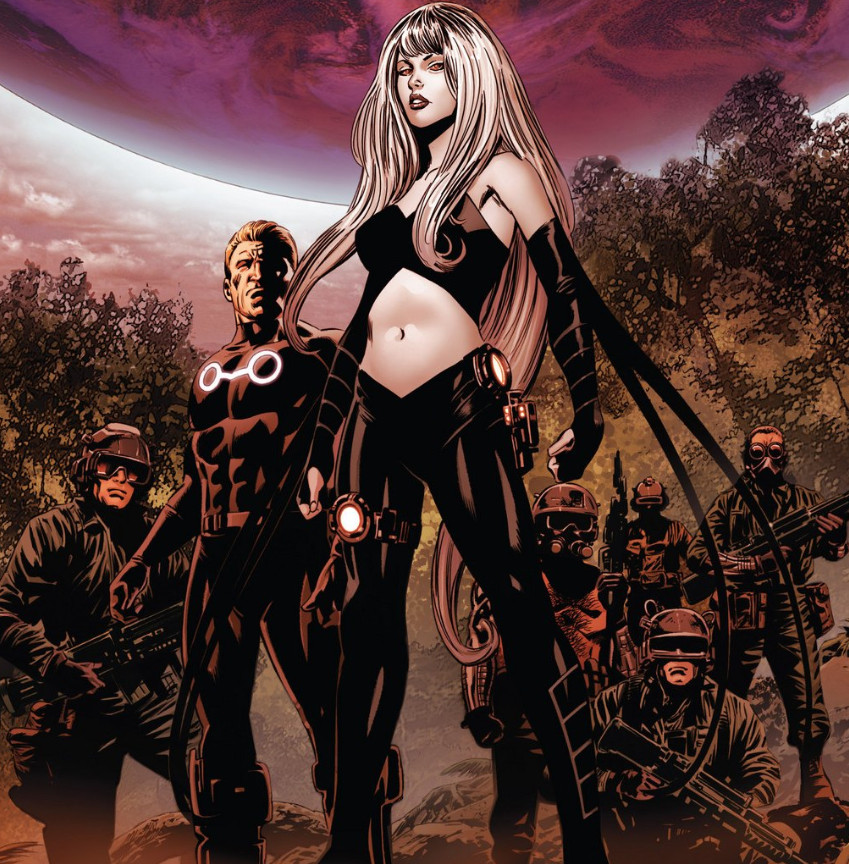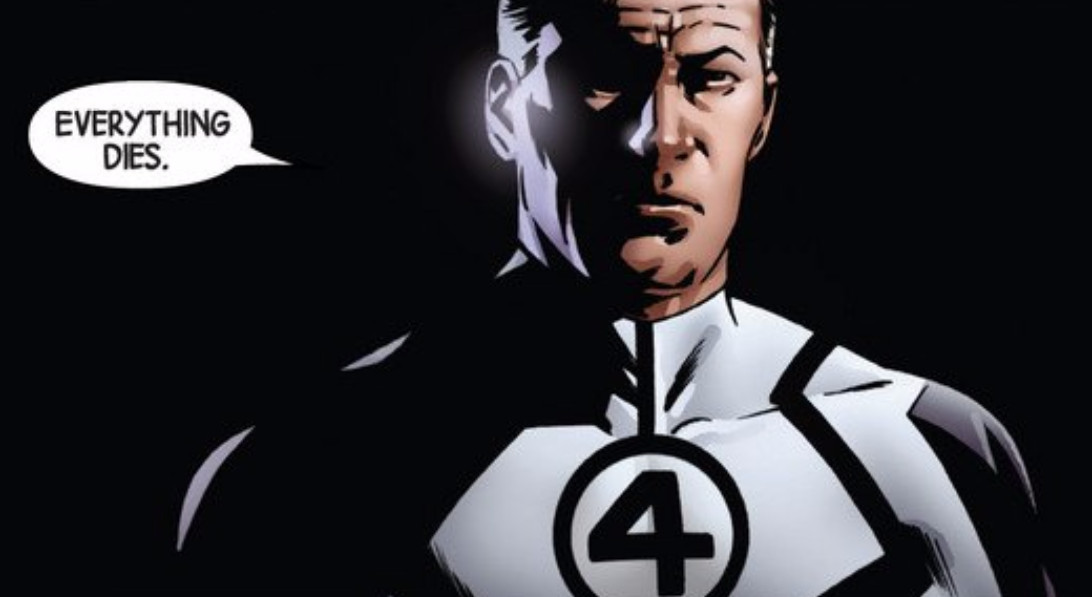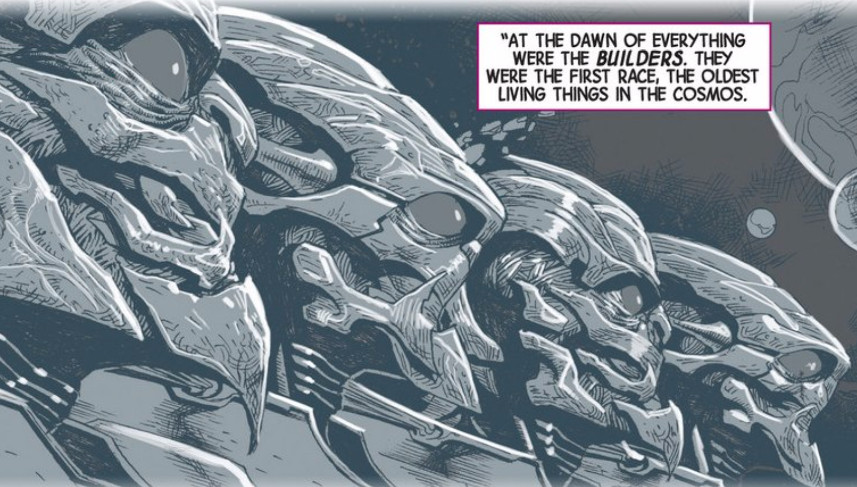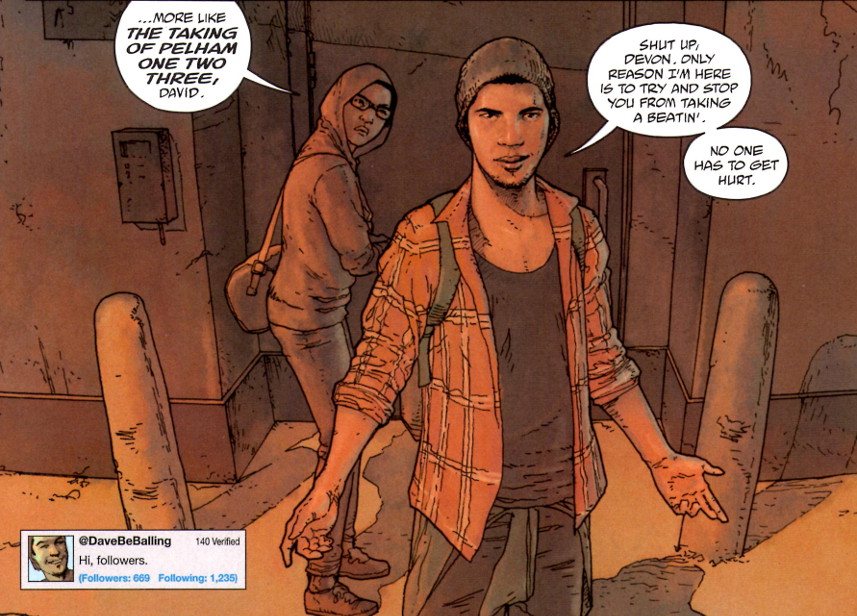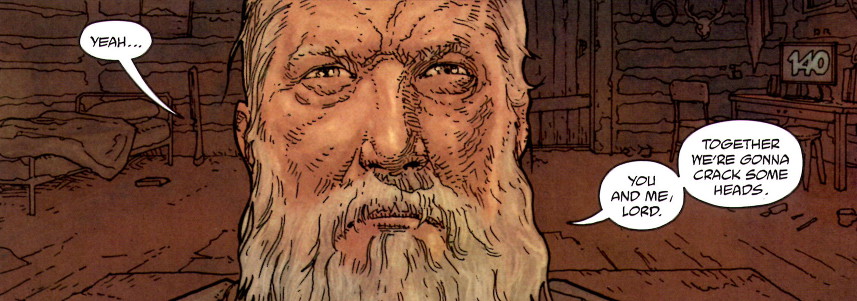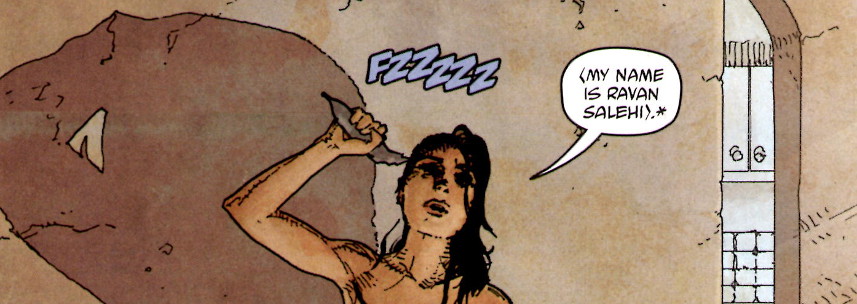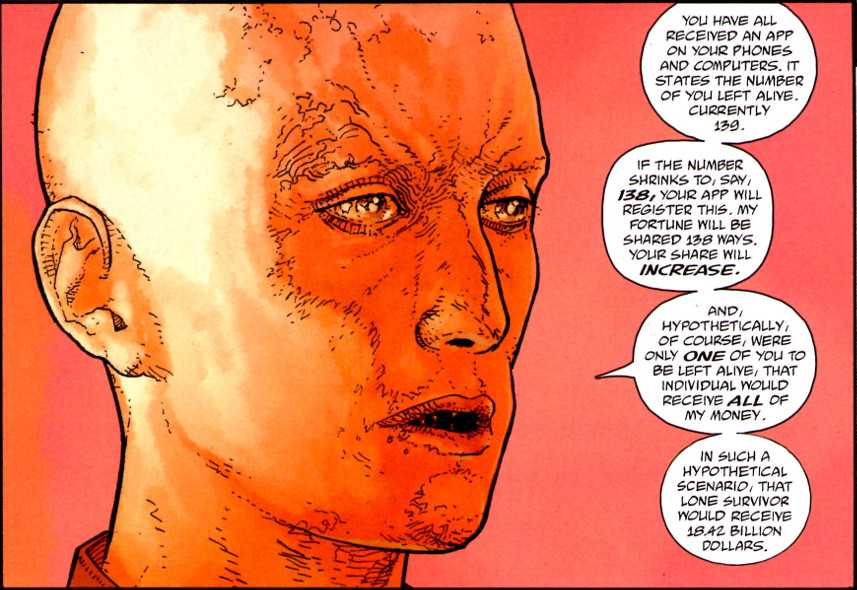Last week’s installment covered the Universe’s response to impending doom: the mounting of an assault on the Earth, which is the fulcrum between survival and Armageddon. Several new groups were introduced – the Builders, the Ivory Kings, Rabum Alal, and the Black Priests – and some old favorites were cast into different roles. The Shi’ar, Kree, Skrulls, and the rest of the star-faring races paired with the Avengers to deal with Builder’s siege while the Illuminati stayed on Earth to deal with Thanos and his Cull Obsidian.
At this point Hickman has all the major factions in the story as chessmen on the board. But the connection between each and just who is moving which pieces is still murky. The rest of the Avengers and New Avengers runs deal with the more personal aspects of the Everything Dies storyline. Specific revelations put a human face to each of the factions. The shifting allegiances and resulting clashes between individual egos add the final set of ingredients to the epic character of this tale and set the stage for the grand finale in the Secret Wars.
While there are numerous interesting character interactions, primary focus rests on these 5
- Captain America and Iron Man
- Black Panther and Namor
- Doctor Doom and Doctor Strange
- Reed Richards and Reed Richards
- Doctor Doom and Reed Richards
Captain America and Iron Man
It might be more apt to describe this interaction as the love and betrayal between two friends – Steve Rogers and Tony Stark. Or perhaps it should be thought of as a Civil War redux, in which the core differences in their character forces them into opposite sides of an issue. In any event, from the very beginning Hickman hints at the coming conflict between these two – conflict made much more bitter because of the great friendship they have.
In Hickman’s own words, put down at the beginning of the Avengers series:

Their differing ways of facing the incursion threat is what drives them apart. As mentioned earlier, in Part 2 of this review, the Illuminati wiped Captain America’s memory of the threat of the incursions when he would not go along with their plan to choose ‘the lesser evil’.
Having nothing but bad dreams that hint at his maltreatment at the hands of the Illuminati, Captain America continues to regard Iron Man as a loyal friend up through the end of the Infinity cross-over event. However, the bad dreams eventually become full-fledged memories and the good captain, gathering a host of Avengers he trusts, confronts the eccentric genius with the cover-up
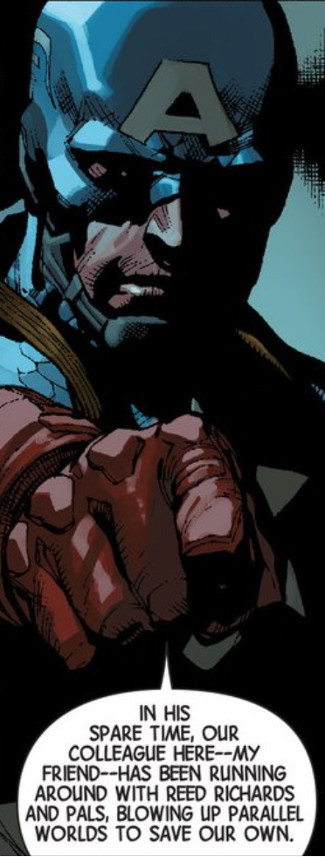
This revelation, part of the kick-off of the Original Sin cross-over event, immediately pits the Avengers against the Illuminati – friend versus friend – as both the Avengers and New Avengers series race to completion. It culminates in a bloody hand-to-hand confrontation to the death between the two in Avengers #44, the last of the series.
Black Panther and Namor
While the events between Captain America and Iron Man were running their course in the Avengers, an even more bitter hatred was developing within the Illuminati between the Black Panther and Namor the Sub-Mariner.
As monarchs of their own empires, one might think that the conflict between T’Challa and Namor only comes about due to Wakanda and Atlantis being on the brink of war

due to the massive tsunami that Namor unleased upon Wakanda

during the conflict between the Avengers and the X-Men. But no doubt their personalities have a lot to do with it as well. Both are proud men, willful men and it seemed inevitable that they would clash. In particular, Hickman portrays Namor as the one member of the Illuminati most willing to end another Earth for the sake of his own.
Their conflict and the estrangement that it brings to the Illuminati, results in Namor aligning himself with Thanos’ new group the Cabal (more details below), which has no scruples in brutally ending alternate Earths. The sadistic pleasure that the Cabal revels in eventually turns Namor’s stomach and he finally teams up with the Black Panther to provide the crucial distraction that allows Reed Richards to defeat Doctor Doom at the end of Secret Wars.
Doctor Doom and Doctor Strange
The strangest and, perhaps most important inter-character relationship is the unlikely one between Doctor Doom and Doctor Strange. Upon it hinges most of the Secret Wars storyline. However, its roots are firmly planted in the events of the New Avengers.
Throughout most the events in Everything Dies, the two doctors – Doom and Strange – seem to be ill-fit. Doctor Strange was, of course, an original member of the Illuminati, but as the group seemed to be working towards a technological solution to the incursion problem what use did they have for a sorcerer. Likewise, even though Doctor Doom’s home country of Latveria plays host to an incursion site and he, himself, manages to hold off the Mapmakers, he is afforded no role by the Illuminati.As a result, both of them go to extraordinary means to solve the incursion problem.
The good Doctor Strange finds himself in the curious position of selling his soul for the power needed to stop the incursions once and for all.

Doing so, he then assumes the head of the Black Priests, one of the two groups who destroy worlds to prevent incursions and who were mentioned with fear and awe by Black Swan.
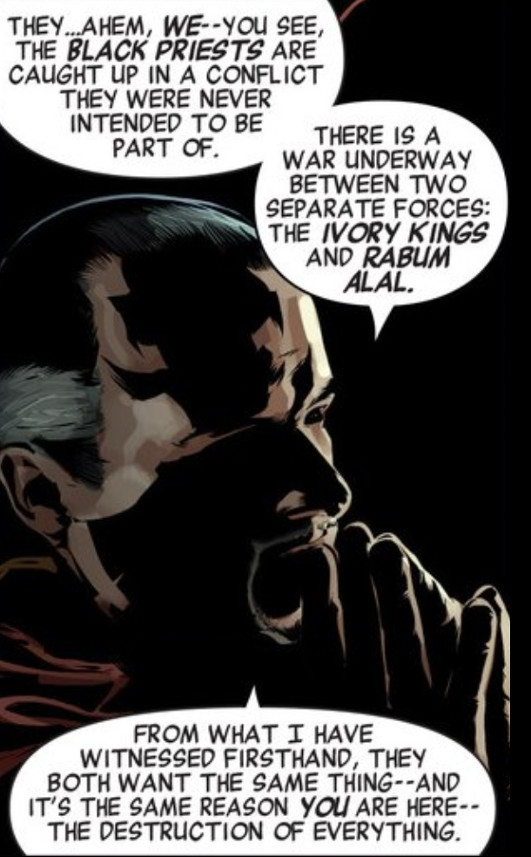
Doctor Doom takes a different route to power. Using the physical evidence left behind at the Latverian incursion, Doom pieces together, using some type of spectral analysis, the frequency signature of the Mapmakers. To his surprise, it matches the signature of the Molecule Man (aka Owen Reese), suggesting the two have the same origin. When confronted with this fact, Molecule Man launches them both into a journey through time, space, and the areas outside the multiverse. In the first leg, the Molecule Man brings Doom to moment where the former gains his powers and explains

As soon as this alternate-universe doppleganger receives his powers, Molecule Man steps forward and murders him. It seems that exact copies of the Molecule Man have been placed in every universe of the multiverse by the Beyonders, the Ivory Kings of Black Swan’s warnings, with the express purpose of ending all existence.

The infinite copies of Owen Reese are a multiversal bomb awaiting detonation.

But Doom is wrong, something did happen when the doppleganger died, although the reader is left to infer this rather than having it spelled-out. When the Molecule Man killed his twin he set in motion the first premature death of a universe and started the incursion process.
The Molecule Man then brings Doom to the Library of Worlds, a place outside the normal structure of the multiverse.
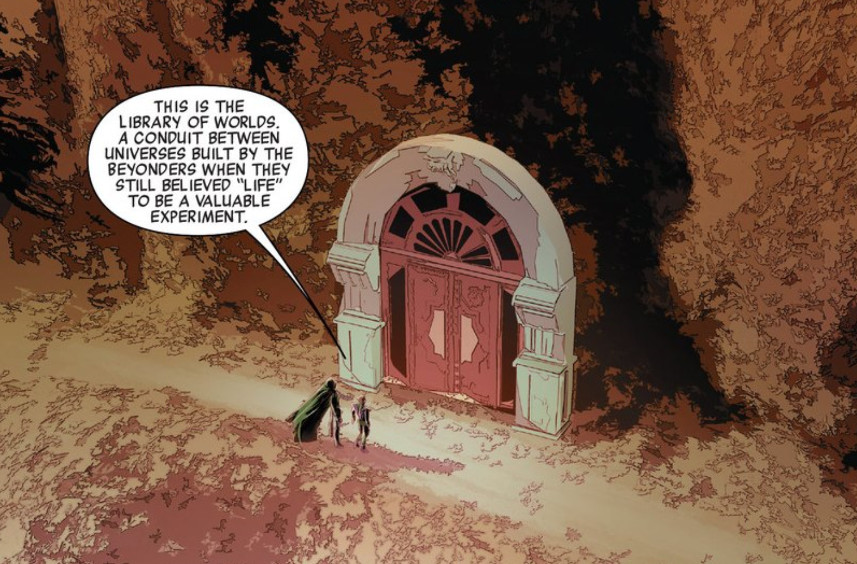
The Library of Worlds serves as a base of operations where Doom can start his own religion peopled by the Black Swans. They will call him Rabum Alal and they will serve as his hands in killing all the copies of the Molecule Man so as to stop the simultaneous destruction of the multiverse at the hands of the Beyonders. Incidentally, the creation of the Black Swans leads to the creation of the Mapmakers and the Sidera Maris by the Beyonders so that they could determine why their grand experiment was going awry.
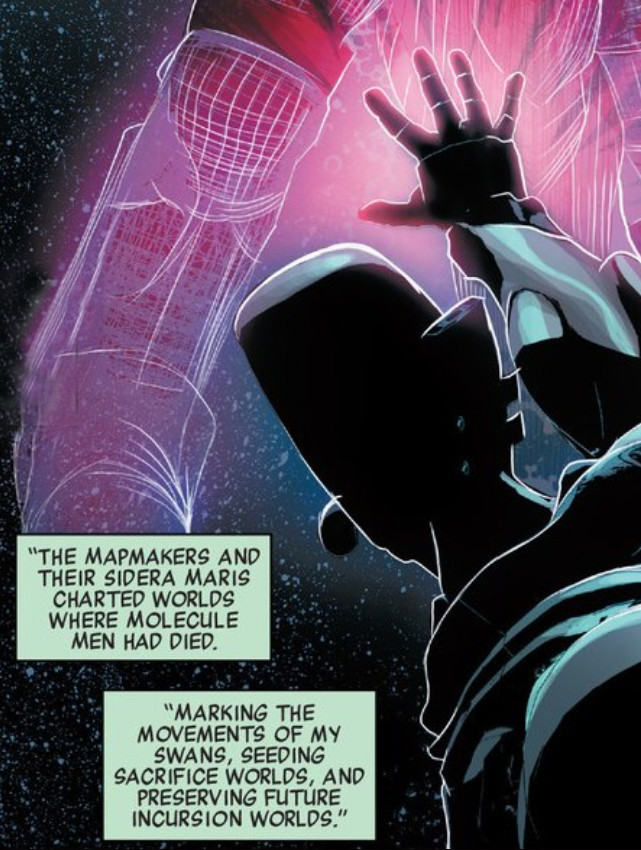
The Black Priests, who are another manifestation of the universe’s/multiverse’s attempt to prevent disaster are the natural enemies to both the Ivory Kings and Rabum Alal. They eventually find the Library of Worlds

and penetrate it with Doctor Strange leading the way. Unfortunately, it is a trap
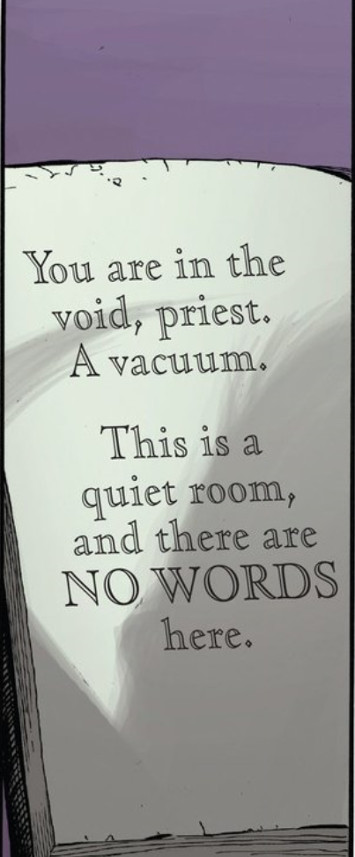
and they are overcome by not having the air they need to articulate their magic words.
Doom captures Doctor Strange and offers him a chance to help in stopping the Beyonders. Strange agrees and a most unexpected alliance is forged, in which they, along with the Molecule Man succeed in stopping the Beyonders.

However, by this point, the multiverse had been destroyed. Using the powers of the Beyonders, Strange and Doom (a strange doom?) piece together a patchwork-quilt of existence
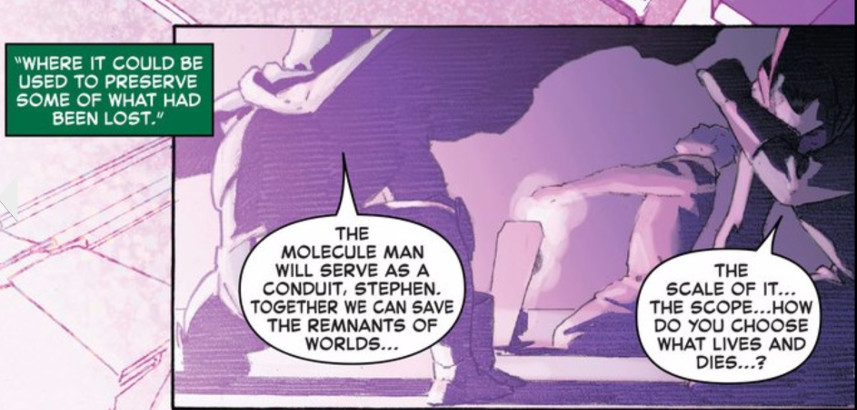
that is latter called Battleworld.
Reed Richards and Reed Richards
Only two life rafts escape the destruction of the multiverse – one from Earth-616, which is the most familiar of the Marvel Earths, and one from Earth-1610, which was the Ultimate Universe. When Doom and Strange call Battleworld into existence, these vessels are drawn to the only reality available. The life raft from the Earth-616 carried, amongst others, the Black Panther and Reed Richards. The life raft from Earth-1610 carried, amongst others, the Cabal and the Maker.
The Cabal, a group of multiversal villains under the direction of Thanos, counts Black Swan, Namor, Maximus, members of the Cull Obsidian, and alternate-universe Terrax as its members. The Maker, is an ‘evil version’ of Reed Richards from the Ultimate Universe.
Together, both Reed Richards’s seek out Doom’s power source, seeking to dethrone Doom. They find that Molecule Man is that source.

The Maker, being truly made in the image of Machiavelli, betrays Reed in an attempt to wrest all the power for himself. Unfortunately, he didn’t count on Molecule Man’s feelings and he is quickly devoured (literally as a pizza) to satisfy the former’s hunger.
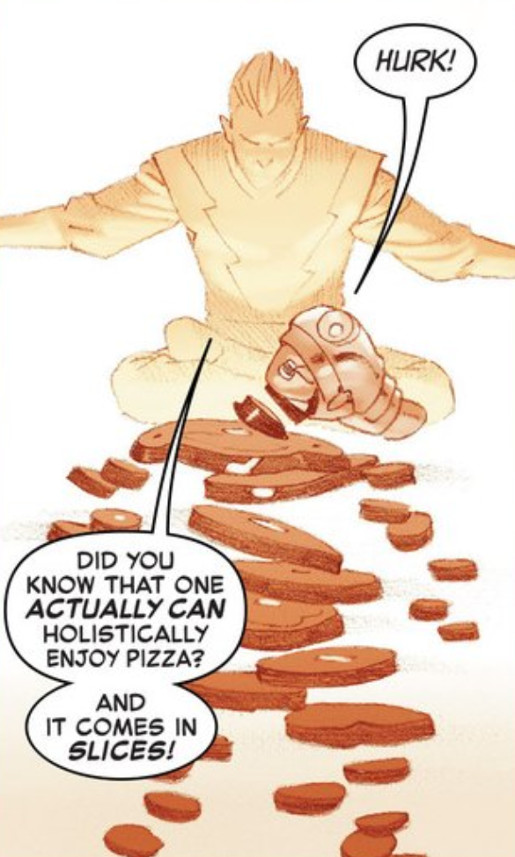
Reed is now ready for the final showdown.
Doctor Doom and Reed Richards
In the final showdown, Reed confronts the god Doom. Willing to hear Reeds argument that there may be a better way to fix things than backing Doom, Molecule Man is willing to sit back and see who ‘deserves’ all the power that he holds. Reed and Victor slug it out both physically and mentally. Reed gets the better in this test of wills when he badgers Doom into admitting that he could have done a better job with all the power at his disposal.
At this point, Owen is convinced that the best person to back is Reed. At this point Battleworld cease to exist and Reed, vested with the power of the Beyonders, sets things right. Using the power from the Molecule Man and the natural ability of his oldest child, Franklin, Reed recreates everything. As explained by Valeria to her mother, Sue Storm,
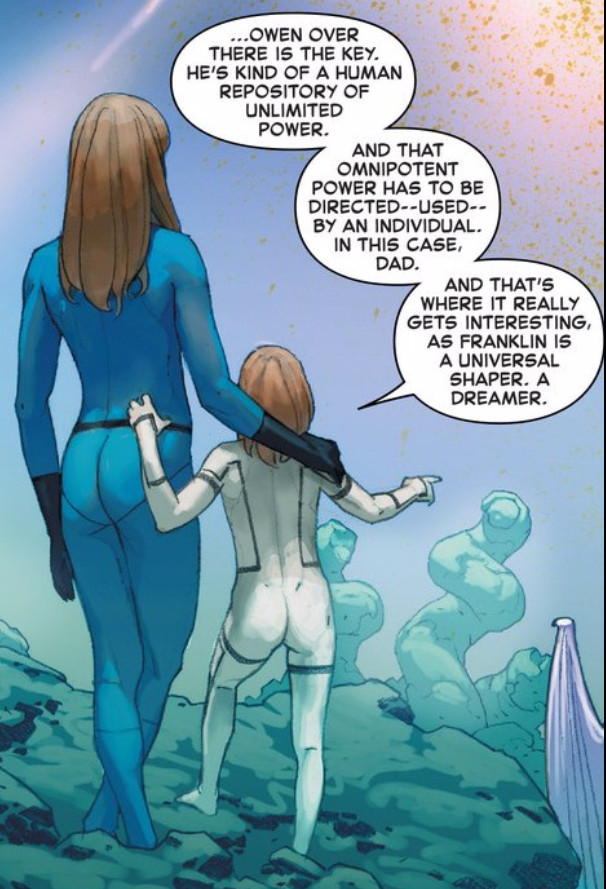
Franklin (the son) dreams up and shapes each new multiverse and Reed (the father) bestows the power to make the shape a reality and Owen (the spirit) becomes the life of the new world. A truly Trinitarian concept.
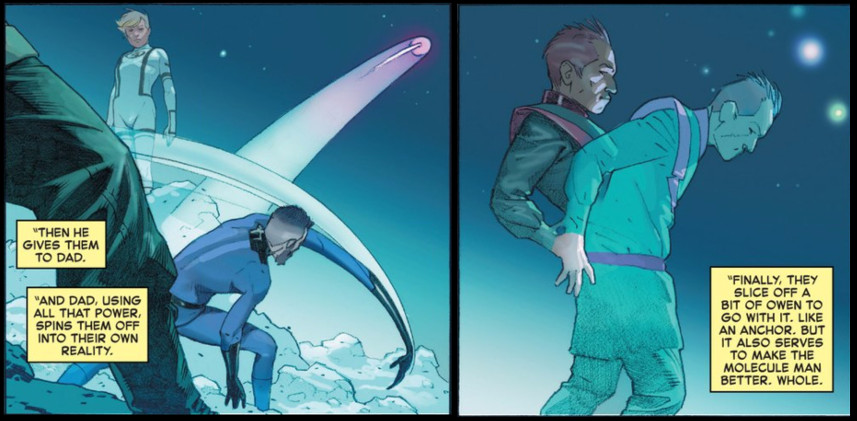
Before I draw this penultimate installment to a close, I offer the following diagram as an abbreviated attempt to show the major players in the Everything Dies storyline.
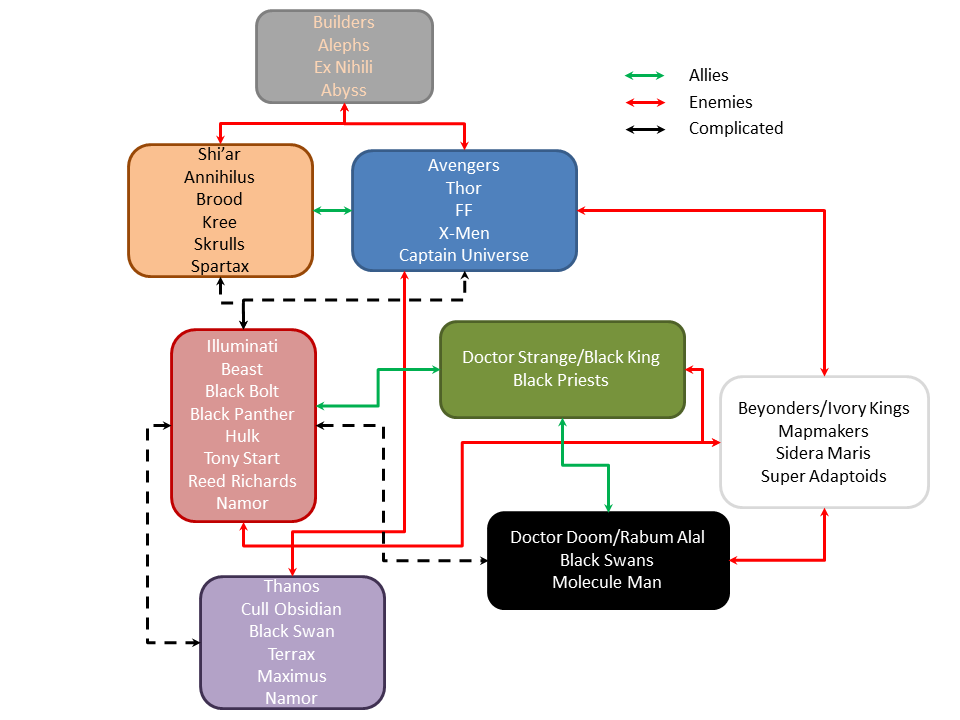
Next week, I’ll finish up with a discussion about what worked and what didn’t in Hickman’s epic.




